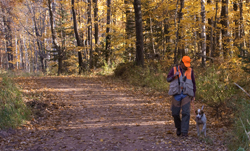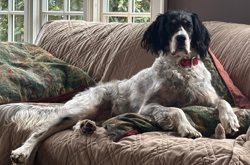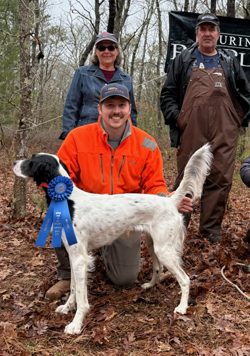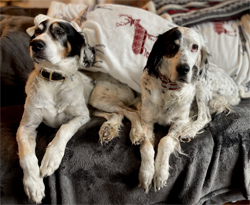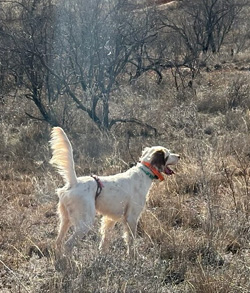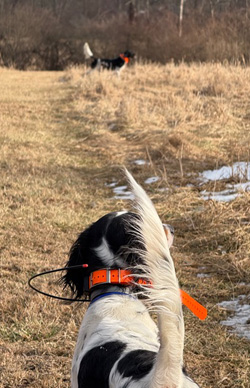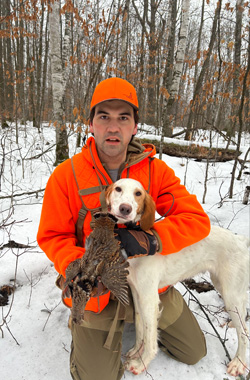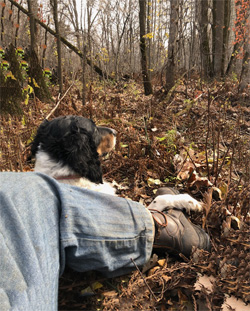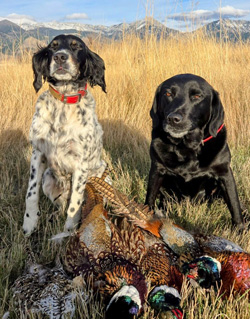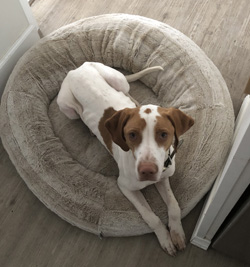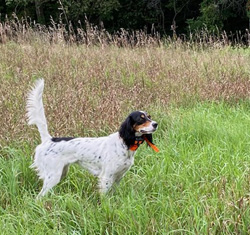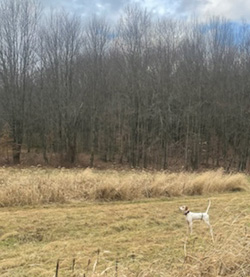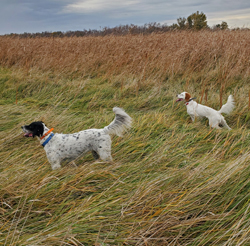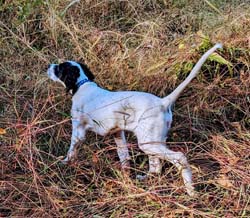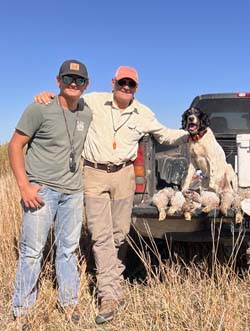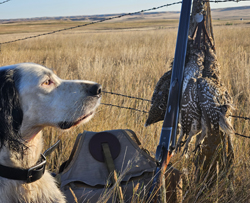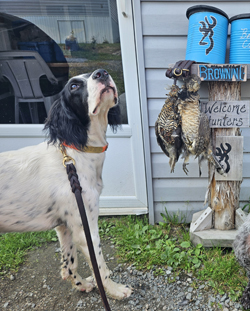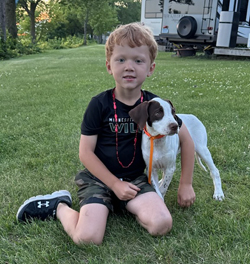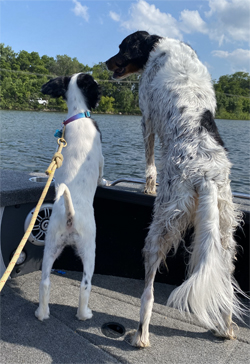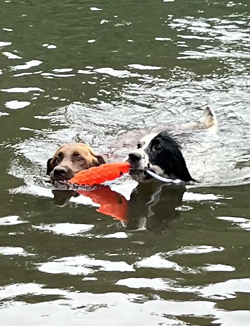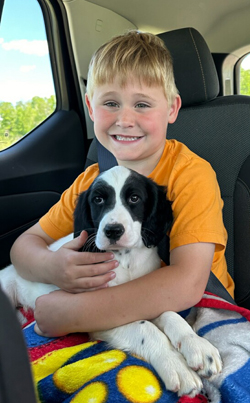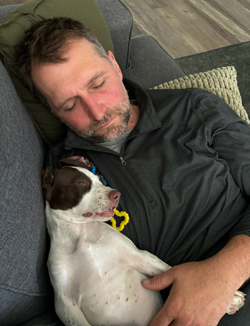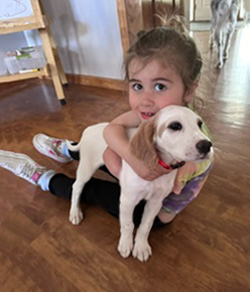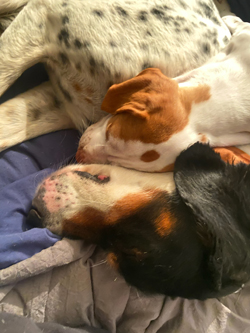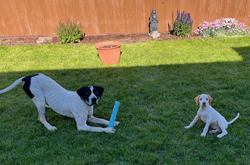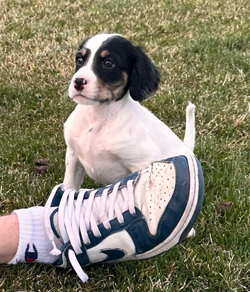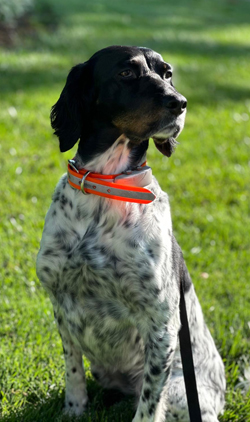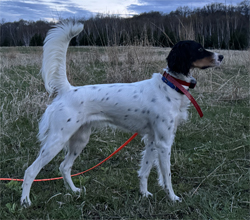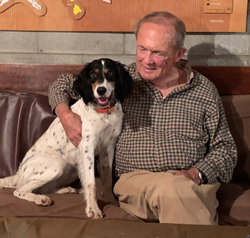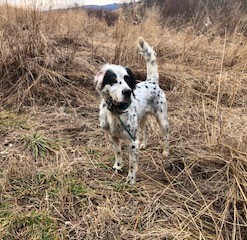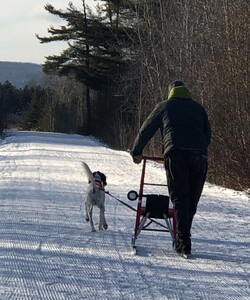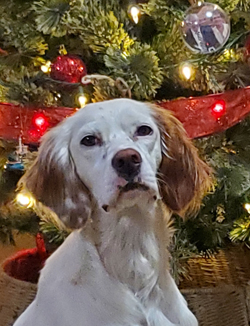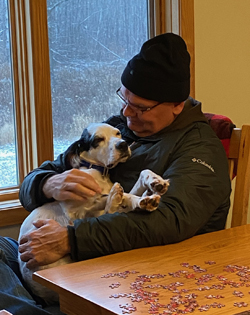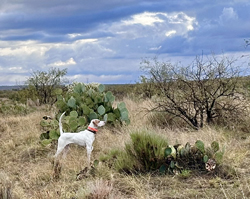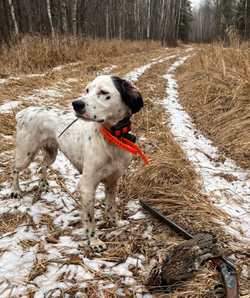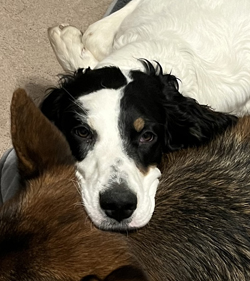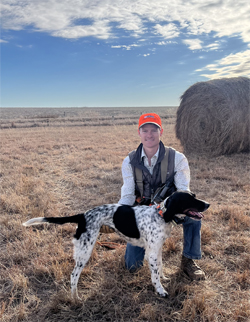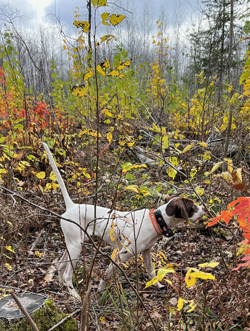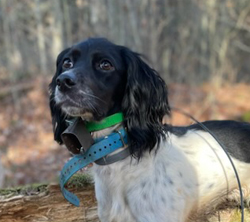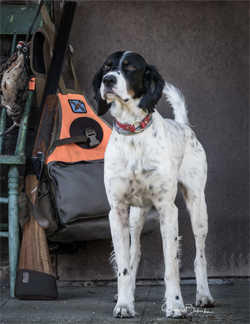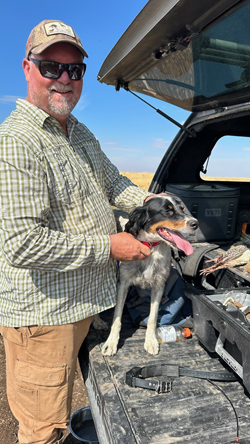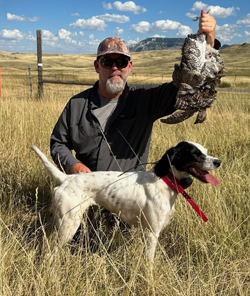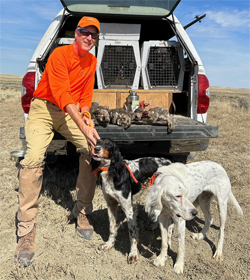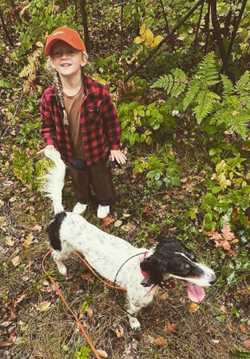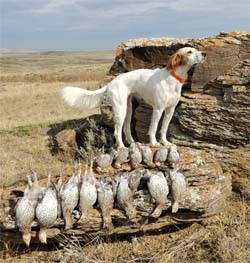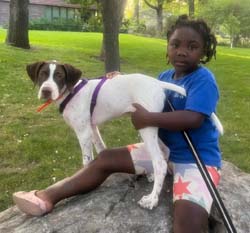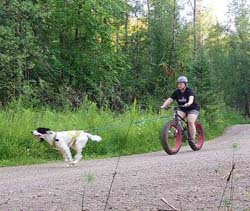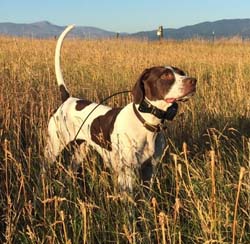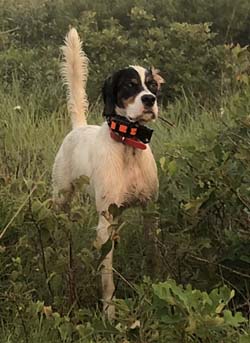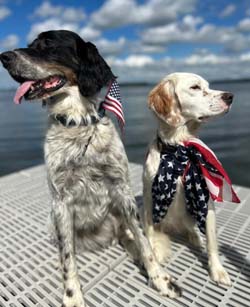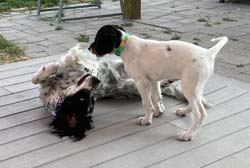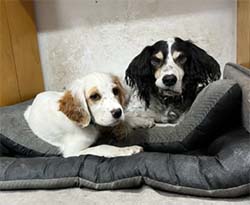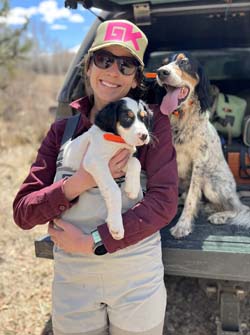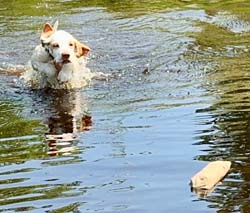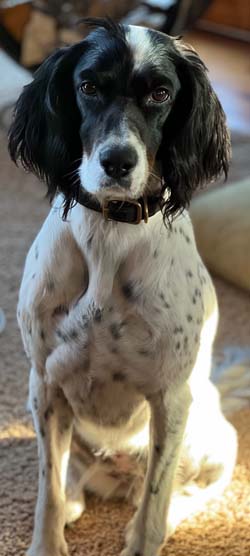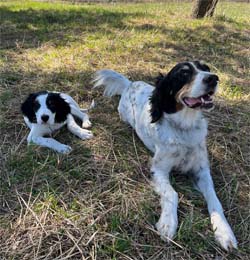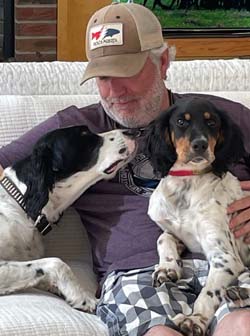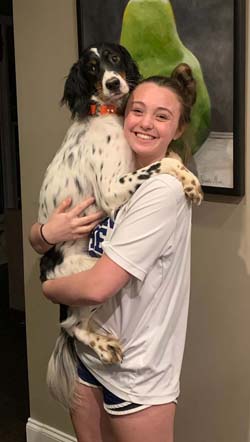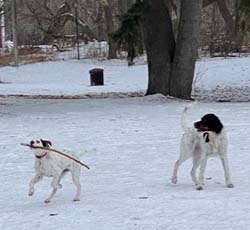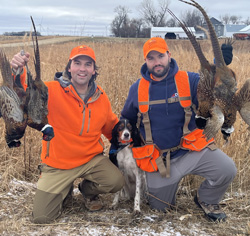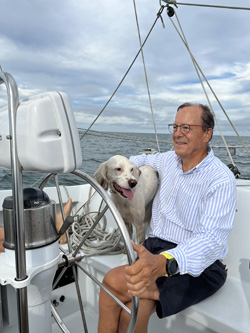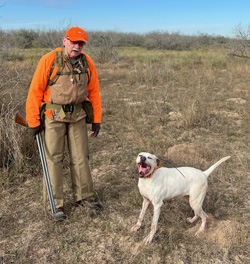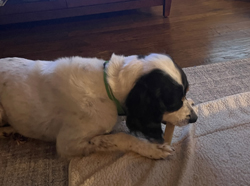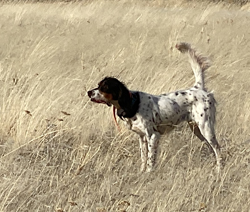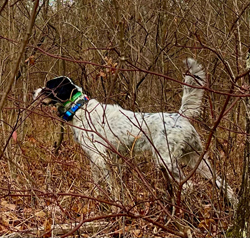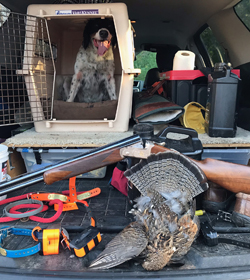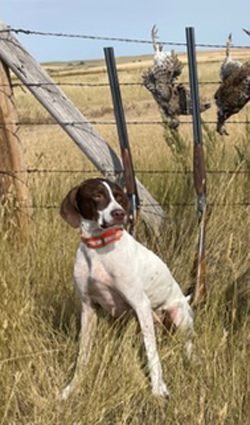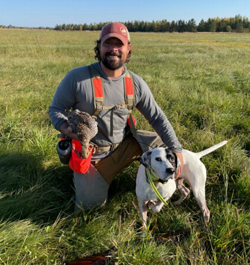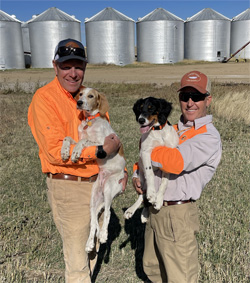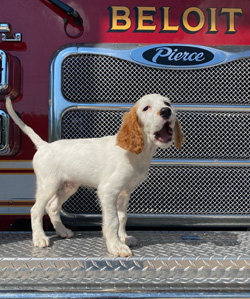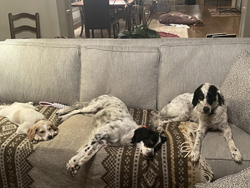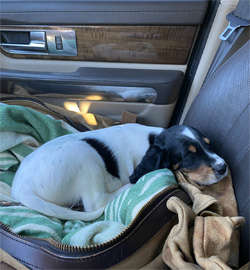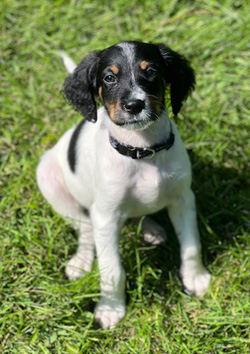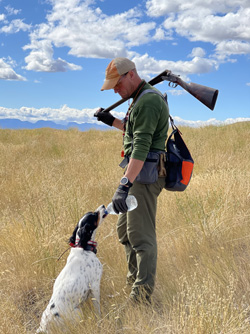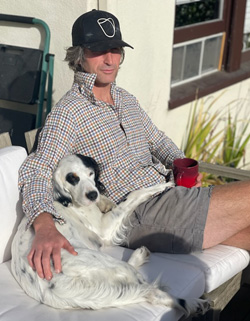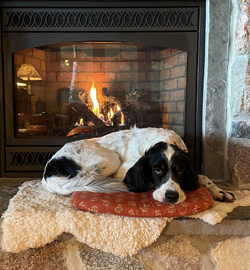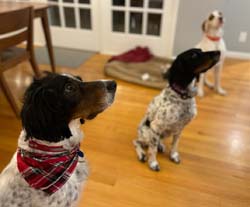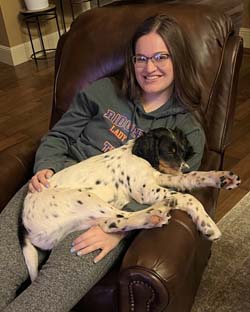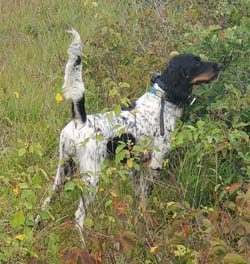Running of the 2015 Continental All-Age Field Trial
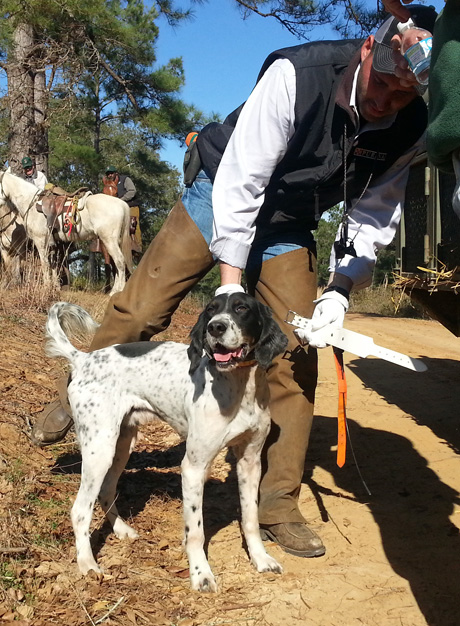
Handler Luke Eisenhart prepares Houston’s Blackjack for his brace. Tracking collars are permitted but the receiver is held by the judges until after time.
Before the sun had cleared the tall pines early on a crisp Florida morning, CH Shadow Oak Bo was loaded into the dog wagon for his brace, second in the day’s running in the 2015 Continental Open All-Age Championship. He sat in the box, big brown eyes calmly observing all the commotion as the seventh day of the prestigious field trial got underway.
This was familiar territory for Bo. In 2011, he won this trial and in 2012 he was named runner-up champion. Bo also won back-to-back National Championships in 2013 and 2014.
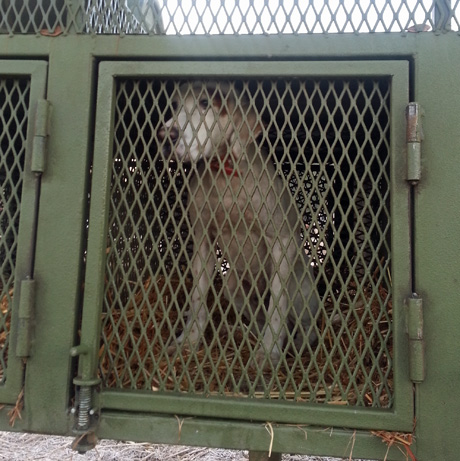
While waiting in the dog box, CH Shadow Oak Bo serenely surveys the scene during a the morning’s running of the Continental All-Age Championship.
At 10:05 a.m., Robin Gates, Bo’s trainer and handler, placed the dog back in dog wagon but not before Bo had three bobwhite covey finds—two on masterful relocations. Gates commented, “He did a good job.”
The Continental Field Trial
The Continental Field Trial Club was formed in 1895 in Chicago so this year marked the 120th. In addition to the all-age competition, an open derby was held. The prestigious trial drew the best amateur and professional trainers/handlers in the country and not merely for bragging rights. The purses were substantial—$15,000 for the all-age champion and $6,000 for the derby winner.
The list of pros was impressive and included, besides Robin Gates and others, Hall-of-Famer Garland Priddy, 2012 top all-age handler Luke Eisenhart and Richie Robertson. Sean Derrig and Gary Lester, top amateurs, had dogs entered. Even Ferrel Miller, owner, trainer and handler of the famous Miller dogs, came to watch.
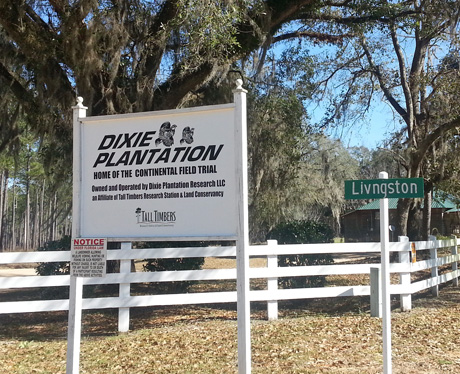
The entrance sign to the Dixie Plantation on Livingston Road, decorated with drawings of bobwhite quail, pretty much says it all: owned and managed by Tall Timbers and home of the Continental Field Trial.
The Dixie Plantation
The history of the Dixie Plantation is similar to other bobwhite quail plantations in the Red Hills Region, an area rich in natural resources in southwestern Georgia/northwestern Florida. In the early 1900s, wealthy businessmen and their families rode the train from their northern homes as far south as possible…and the tracks ended in Thomasville, Georgia.
Gerald Livingston was the son and heir of Cranston Livingston II, an investor in the Northern Pacific Railway. Livingston and his wife Eleanor lived in New York City where he ran the stock brokerage firm of Livinston & Co. In 1910, Livingston first traveled to the area on a hunting trip and later, in 1926, the couple purchased the first piece of property (7,500 acres) and named it the Dixie Plantation.
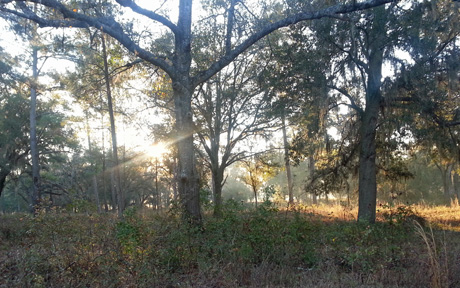
The lush cover on the Dixie Plantation can be thick with brambles, broom sedge, wire grass and other plants. The overhead canopy is live oaks draped with Spanish moss and longleaf or loblolly pines.
During the 1930s, Livingston bought additional property and the plantation increased to more than 18,000 acres and straddled the Florida/Georgia line.

The gallery is often large and can get spread out, especially when a dog is on point. Often a handler not in the brace will ride along and road his dogs.
The Continental and the Dixie
The tie between the Continental Field Trial Club and the Dixie Plantation goes back 78 years. Livingston had always been an avid sportsman, hunting with his pointers off horseback. When he was president of the Continental, he first hosted the trial at the Dixie in 1937.
After Livingston died in 1950, his heirs continued running the plantation and continued to host the Continental. In 2013, plantation ownership passed to Tall Timbers Research & Land Conservancy but Livingston’s legacy is still honored. Randy Floyd is President/Treasurer of the club and has run the trial for 18 years. He also works for Tall Timbers at the Dixie Plantation.

Water tanks are placed at strategic locations on the courses. They are of multiple use—horses drink, trial dogs are dunked before their brace and roading dogs plop in to drink and cool off.
The running
The vast piney woods of the Dixie is a true challenge. To win, a dog needs to cover acres of lush, thick cover, show consistently and point multiple coveys of wild quail, all while the handler rides about 75 yards ahead of the judges and sings to his dog. Even the scout’s job is limited to riding to each side, ensuring that the dog isn’t passed by while on point.
The all-age circuit is dominated by pointer males and the Continental was no different. Of the 88 dogs entered, here’s the breakdown.
• pointer males: 66
• pointer females: 12
• setter males: 9
• setter females: 1
Of the many extraordinary champion dogs, Jerry and I were especially excited to see three. We, together with Paul Hauge, our partner in numerous dog ventures, bred Northwoods Chardonnay (owned by Paul) to frozen semen of Shadow Oak Bo. Chardonnay whelped eight and we have four puppies with us for the winter.
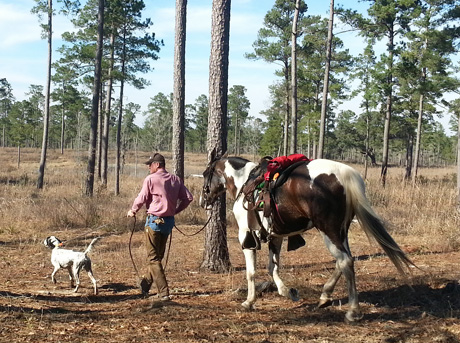
Scout Tommy Davis leads Houston’s Blackjack to the breakaway for his brace in the middle of a dry, sunny afternoon.
CH Houston’s Blackjack (CH Can’t Go Wrong x CH Houston’s Belle, 2008), again bred by Paul, Jerry and me, is now owned by Paul and campaigned on the all-age circuit by Luke Eisenhart. Jack ran in the middle brace on a dry, calm afternoon. At 35 minutes, he had the first find but was picked up because he moved about six inches on the flush. “The birds were right under him,” Luke remarked.
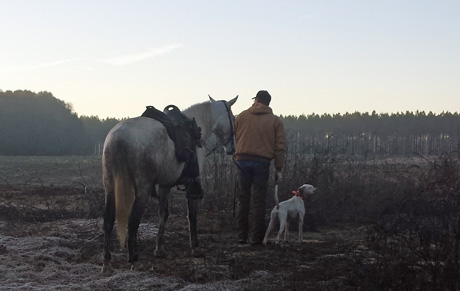
True Confidence, owned by Frank LaNasa and handled by Luke Eisenhart, is held by Luke’s scout, Tommy Davis, just prior to the breakaway.
CH True Confidence (call name Bob) is owned by good friend and partner in our North Dakota camp, Frank LaNasa. Bob is a multiple champion in prairie trials and this winter Frank placed Bob with Luke. On a brisk morning, Bob ran a strong forward race, had a nice limb find and an unproductive in a known covey location.
The finals
The Continental usually has a thrilling finish. The main running consists of one-hour braces which are really just qualifying heats. At the discretion of the judges, dogs are called back for one-hour and 50-minute finals. The extremely competent judges this year, Harold Ray and Doug Vaughn, named 12 dogs for the finals. As much as we rooted for “our” dogs—Bo, Jack and Bob—none was in the call back.
By the end of Saturday’s running, Luke’s pointer Erin’s Wild Justice, owned by Allen Linder, was named champion and Miller’s Dialing In, owned and handled by Gary Lester, was runner-up.
Congratulations to Luke, Allen, Gary and their champion dogs!




